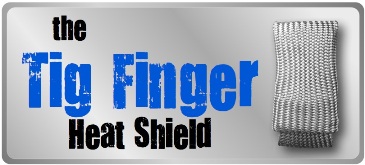Tig Welding Carbon Steel and low alloy steels part2
click here to see part1
This is part2 of tig welding carbon steels, high strength steels, and low alloy steels.
In this video , we put the second pass tig weld on to achieve the required fillet weld leg size of 5/16".
So that brings me to a different conversation.
There are very different strategies for welding carbon and low alloy steels vs welding stainless steels.
click here to see part1
For welding carbon and low alloy high strength steels, the main consideration is often a minimum preheat temp along with a minimum interpass temperature.
- Ever heard the term minimum interpass temperature?
- How about maxium interpass temperature?
- or minimum preheat temperature?
Well this video offers a good chance to talk about the difference in those terms.
For code welding of carbon and low alloy steels, if the carbon content or carbon equivalent is high enough, a minimum preheat temperature is often specified on the welding procedure. A minimum preheat temperature slows the cooling rate and prevents formation of brittle areas.
Minimum interpass temerature is pretty much the same concept as minimum preheat temp.
Min preheat means the part has to reach a certain temp before you ever start welding.
Min interpass means the part needs to maintain a certain temp.
The carbon equivalent number for the high strength steel in this video is around .60% so its very important to adhere to preheat and interpass temperatures.
But stainless steel is a different animal. 300 series stainless steels will not harden by quick cooling.
The issue with welding stainless steels is to keep them below a maximum interpass temp. Keeping 300 series stainless at an elevated temperature ...like over 800f for a long period of time causes something called carbide precipitation.
Thats a fancy way of saying the stainless properties are compromised.
what happens is that carbon and chromium combine to form chromium carbides and that causes chromium depleted areas.
since chromium is largely the element responsible for corrosion resistance, chromium depleted areas will corrode, rust, and possibly even crack. All this does not happen immediately, but once the part is placed in service. That is what makes it such a problem.
So for carbon and low alloy steels, making sure to keep the part hot and slow the cooling rate is important.
But for 300 series stainless, the goal is different. Its to not let the metal get too hot.
see more tig welding carbon steel videos














